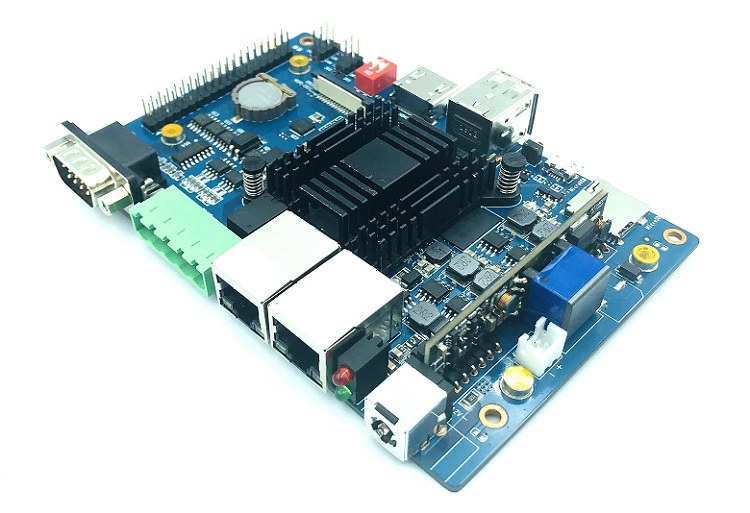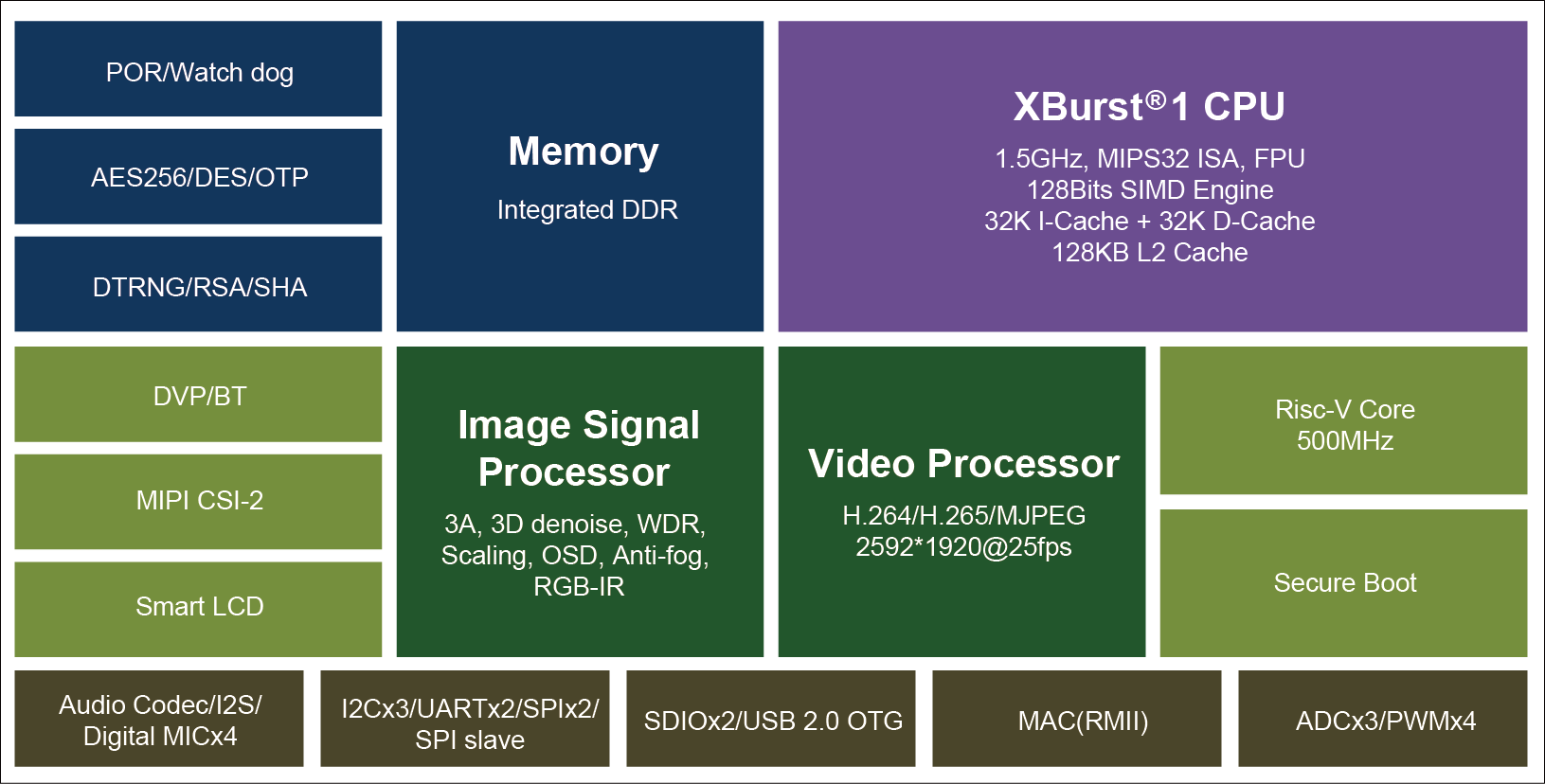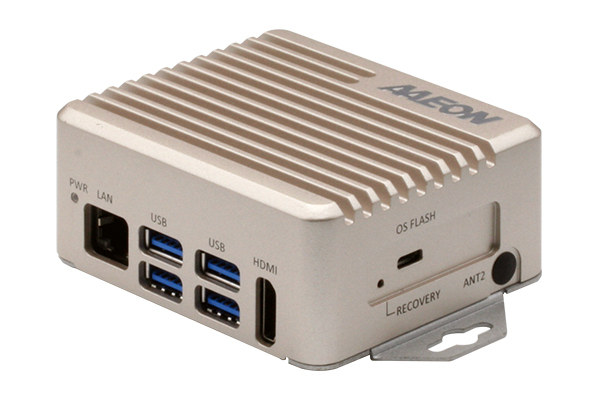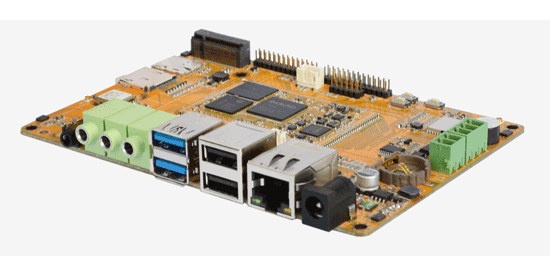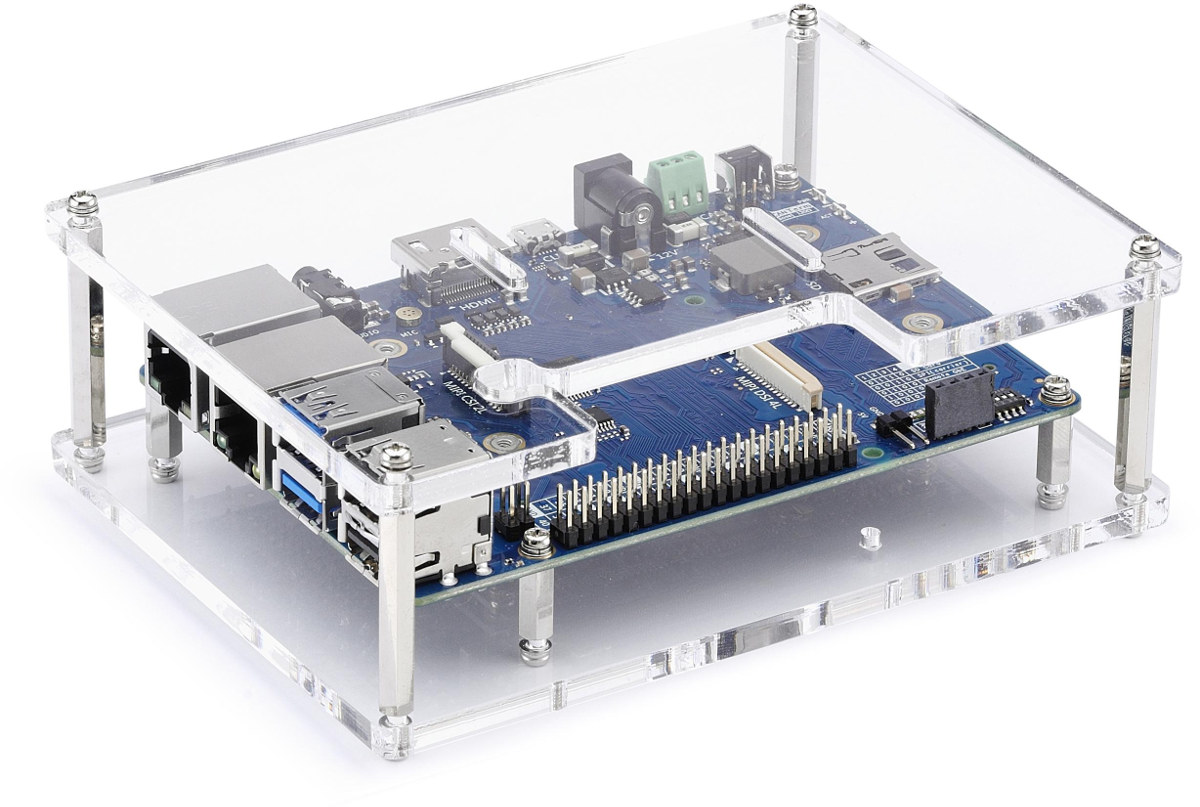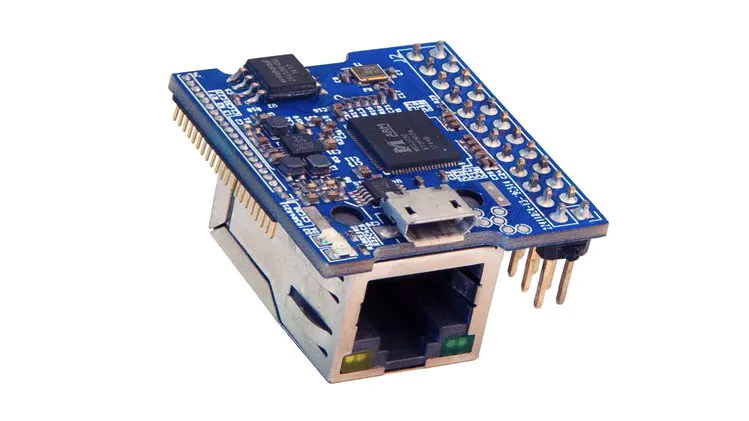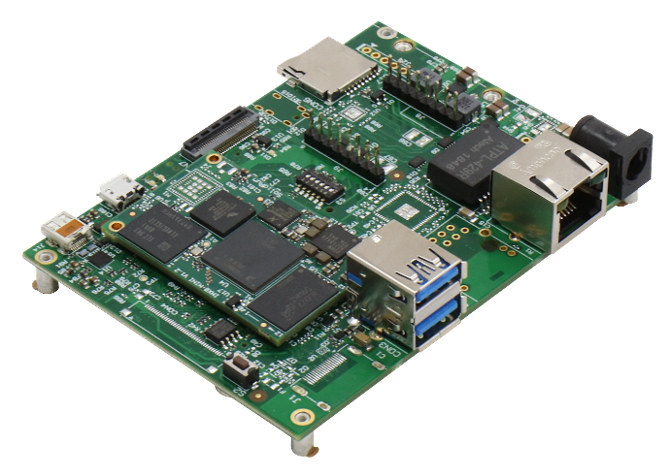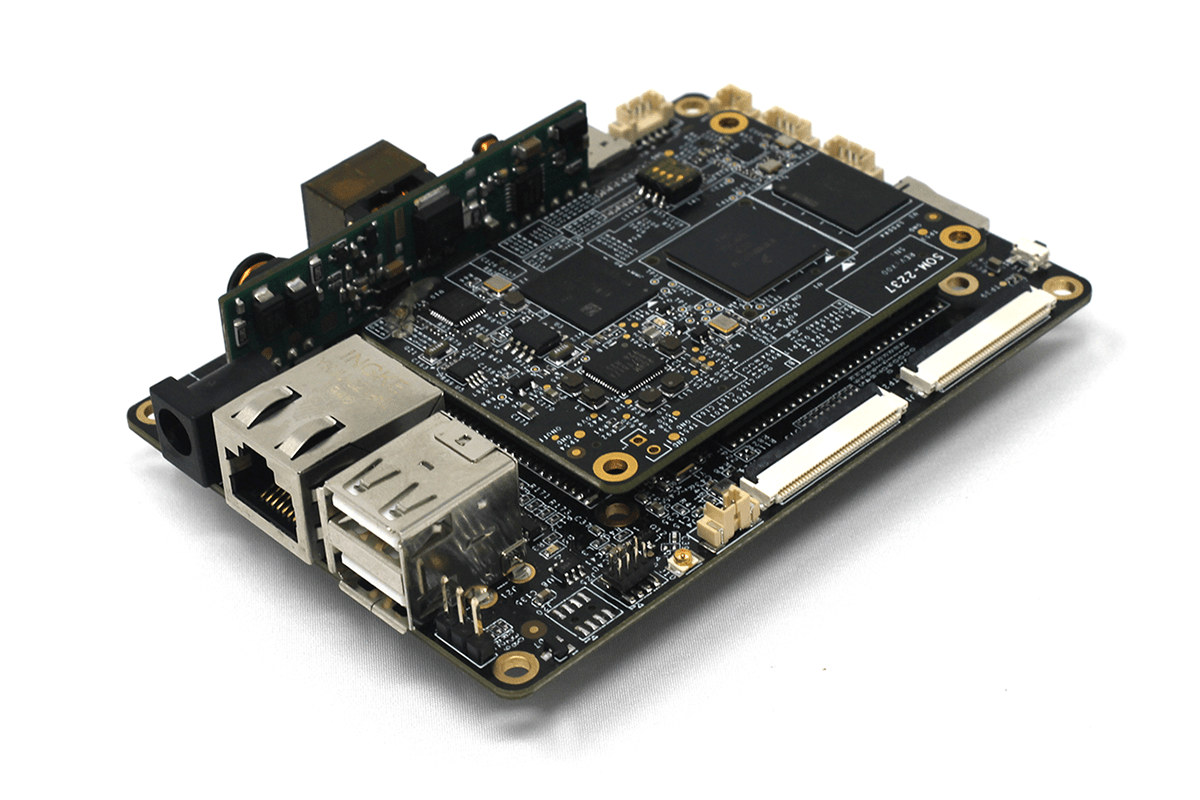At the end of Last year, we covered Banana Pi BPI-F2S Industrial SBC powered by Sunplus SP7021 “Plus1” SoC with four Cortex-A7 core, an Arm A926 microprocessor, an 8051 core, as well as 128MB to 512MB built-in DDR3 RAM. The company has now unveiled Banana Pi BPI-F2P with the same processor and many of the same features, but with the addition of PoE support on one of the Fast Ethernet ports, as well as an RS-232 DB9 connector, and RS-485 terminal blocks. The expansion connector for an FPGA board found in BPI-F2S is however gone. Banana Pi BPI-F2P specifications: SoC – Sunplus SP7021 “Plus1” with a quad-core Cortex-A7 processor @ 1.0 GHz, one Arm A926 microprocessor, an 8051 core to handle I/Os, and 128MB or 512MB DDR3 DRAM. Storage – 8GB eMMC flash, microSD card slot Video Output – HDMI 1.4 output Camera I/F – MIPI CSI connector Connectivity – […]
Ingenic T31 AI Video Processor Combines MIPS & RISC-V Cores
Last week we asked “is MIPS dead?” question following the news that Wave Computing had filed for bankruptcy, two MIPS Linux maintainers had left, and China-based CIP United now obtained the exclusive MIPS license rights for mainland China, Hong Kong, and Macau. Ingenic is one of those Chinese companies that have offered MIPS-based processors for several years, but one commenter noted that Ingenic joined the RISC-V foundation, and as a result, we could speculate the company might soon launch RISC-V processors, potentially replacing their MIPS offerings. But Ingenic T31 video processor just features both with a traditional Xburst MIPS Core combines with a RISC-V “Lite” core Ingenic T31 specifications: Processors XBurst 1 32-bit MIPS core clocked at 1.5GHz with Vector Deep Learning accelerator based on SIMD128, 64KB + 128KB L1/L2 Cache RISC-V independent lite core System Memory – Built-in 512Mbit (64MB) or 1Gbit (128MB) DDR2 Storage – Quad SPI flash, […]
AAEON Compact Fanless Embedded Box PC Features NVIDIA Jetson Xavier-NX or Nano SoM
NVIDIA Jetson Xavier-NX module was officially launched about a week ago, and at the time we noted several carrier boards and mini PCs were launched or announced from companies like D3 Engineering, Diamond Systems, and Connect Tech. We should expect many new Jetson Xavier-NX embedded mini PC announcements over the next few weeks and months, and AAEON has now announced two new similar compact fanless embedded box PCs namely Boxer-8221AI and BOXER-8251AI with the same designed but powered by respectively Jetson Nano and Jetson Xavier-NX modules. Both models should share the same specifications except for the module: SoM Boxer-8221AI – NVIDIA Jetson Nano with quad-core Arm Cortex-A57 processor @ 1.43 GHz, 128-core Maxwell GPU, 4GB LPDDR4, 16GB eMMC flash Boxer-8251AI – NVIDIA Jetson Xavier-NX with 6-core NVIDIA Carmel ARM v8.2 64-bit CPU, a 384-core NVIDIA Volta GPU with 48 Tensor Cores, 2x NVDLA deep learning accelerators (up to 21 TOPS […]
Boardcon RK1808 SBC Targets Smart Audio & Computer Vision Applications
Rockchip RK1808 neural network processing unit was initially an IP Block inside RK3399Pro, but the company eventually launched RK1808 Cortex-A35 processor as a standalone solution now providing up to 3.0 TOPS for AI inferencing in modules, USB sticks, and development kits. Boardcon offers another option with EM1808, a Rockchip RK1808 SBC equipped with the processor. The board should be suitable for two main types of AI applications, namely smart audio applications thanks to four audio ports, speaker header, & an onboard 4-mic array, and computer vision with MIPI CSI & DSI interfaces. Boardcon EM1808 board is comprised of a baseboard and CPU module with the following overall specifications: SoC – Rockchip RK1808 dual Cortex-A35 processor up to 1.6GHz with 3.0 TOPS (for INT8) NPU, VPU supporting H.264 1080p60 decode, 1080p30 encode System Memory- 2GB LPDDR3 Storage – 8GB eMMC flash, MicroSD slot, M.2 NVMe SSD interface Display I/F – 26-pin […]
ADLink Launches Vizi-AI Development Starter Kit for Industrial Machine Vision & Artificial Intelligence
ADLINK has recently launched Vizi-AI development starter kit for industrial machine vision and artificial intelligence (AI) at the edge in collaboration with Intel and Arrow Electronics. Vizi-AI is comprised of a carrier board that looks to be the same as used in the company’s I-Pi SMARC development kit equipped with an Intel Movidius Myriad X VPU and combined with LEC-AL Intel Atom Apollo Lake SMARC computer module. Vizi-AI SBC Let’s have a look at the hardware features and specifications of Vizi-AI SBC (aka VIZI-AI LEC-AL-E3940-AI-4G-32G): SoC – Intel Atom x5-E3940 quad-core Apollo Lake-I processor @ up to 1.6 / 1.8 GHz (Turbo) with 12EU Intel HD Graphics 500; 9.5W TDP System Memory – 4GB LPDDR4 (Option up to 8GB) Storage – 1x MicroSD card slot AI Accelerator – Intel Movidius Myriad-X VPU (Vision Processing Unit) Video – 1x HDMI port, single-channel LVDS/eDP interface via flat cable Audio – On-carrier audio […]
BreadBee is a Tiny Embedded Linux SBC based on MStar MSC313E Camera SoC (Crowdfunding)
There are plenty of tiny and compact Arm Linux SBC on the market from NanoPi NEO to Raspberry Pi Zero or Rock Pi S. But Daniel Palmer has been able to design an even smaller board – BreadBee – based on MStar MSC313E Cortex-A7 SoC since the processor also embeds 64MB RAM, or enough to run embedded Linux.BreadBee specifications: SoC – MStar MSC313E Arm Cortex-A7 processor @ ~1.0 GHz with NEON, FPU, 64MB DDR2 Storage – 16MB SPI NOR flash Networking – 10/100M Ethernet (RJ45) USB – 1x Micro USB 2.0 port Expansion 24-pin dual-row header (2.54mm pitch) with SPI, I2C, 4x 10-bit ADC, 3x UART, GPIOs 21-pin header (1.27mm pitch) with SD/SDIO, USB 2.0, GPIOs Misc – RTC, Watchdog timer Power Supply – 5V via micro USB port Dimensions – 32 x 30mm Despite MStar MSC313E being a camera processor, the camera interface does not seem exposed in the […]
HummingBoard Ripple SBC Targets AI Applications with NXP i.MX 8M Mini SoC & Gyrfalcon Lightspeeur 2803S NPU
SoliRun has made good use of its i.MX 8M Mini SoM which – as its name does not imply – comes with both an NXP i.MX 8M Mini processor and Gyrfalcon Lightspeeur 2803S AI accelerator, and can now be found in HummingBoard Ripple SBC part of the new HummingBoard-M family and based on a cost-reduced version of HummingBoard Pulse baseboard which we covered in 2018. Note that HummingBoard Ripple board is also available with the earlier SoliRun i.MX 8M module, and comes with up to 4GB RAM, Gigabit Ethernet, USB 3.0, Micro HDMI. Compared to HummingBoard Pulse SBC, it does without MIPI-DSI nor digital audio, and removing one Gigabit Ethernet port, and one MIPI-CSI connector. HummingBoard Ripple SBC specifications: SOM Model NXP i.MX8M dual-/quad-core Arm Cortex A53 processor up to 1.5GHz with Arm M4 MCU core NXP i.MX8M Mini single to quad-core Arm Cortex A53 processor up to 1.8GHz with […]
NXP i.MX 8M Mini Pico-ITX SBC Comes with Audio DSP, Optional PoE and Google Coral M.2 Module
We’ve covered several NXP i.MX 8M Mini SBC‘s since the announcement of the processor in 2018 as the first i.MX SoC manufactured with a 14nm process allowing for a higher CPU clock of 2.0 GHz compared to the 1.5 GHz frequency used with the original i.MX 8M processor. i.MX 8M Mini also removes some features (4K video playback, some video interfaces, …) in order to lower the cost of the processor. Companies are still releasing new i.MX 8M SBCs regularly, but we don’t always cover them all since many often do not offer much compared to the competition. But Estone Technology EMB-2237-AI Pico-ITX SBC has some unusual features and options including a Cirrus Logic audio DSP, as well as support for a PoE module and Google Coral M.2 AI accelerator module. EMB-2237-AI SBC is comprised of a system-on-module and baseboard with the following specifications: Estone SOM-2237 module SoC – […]


